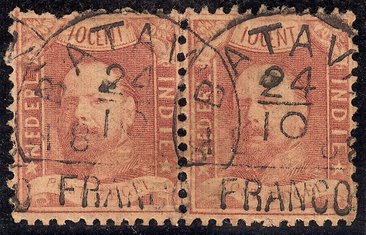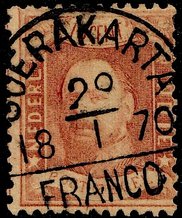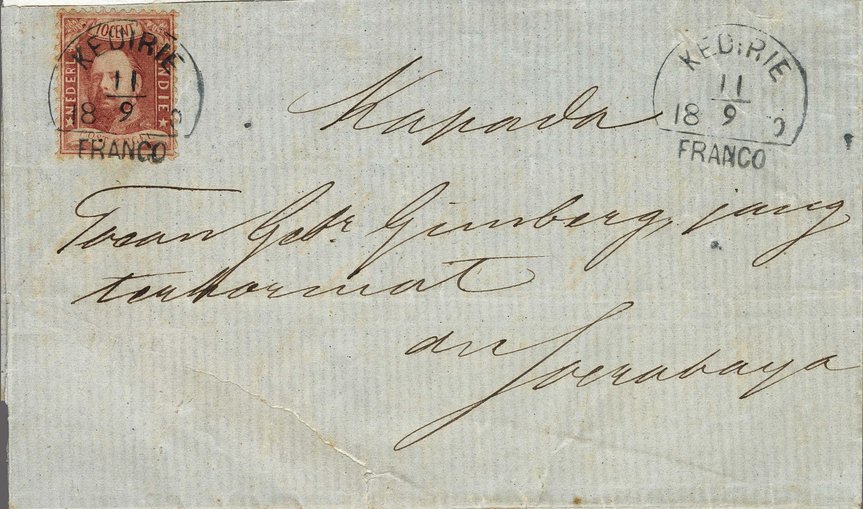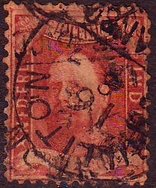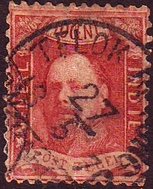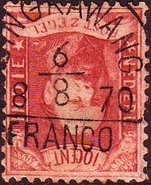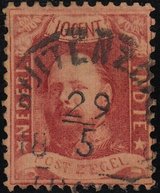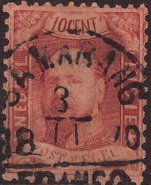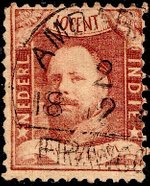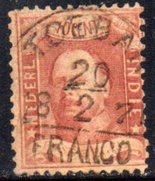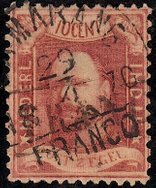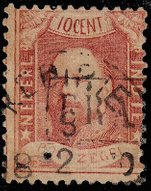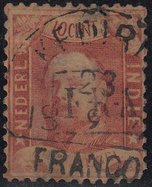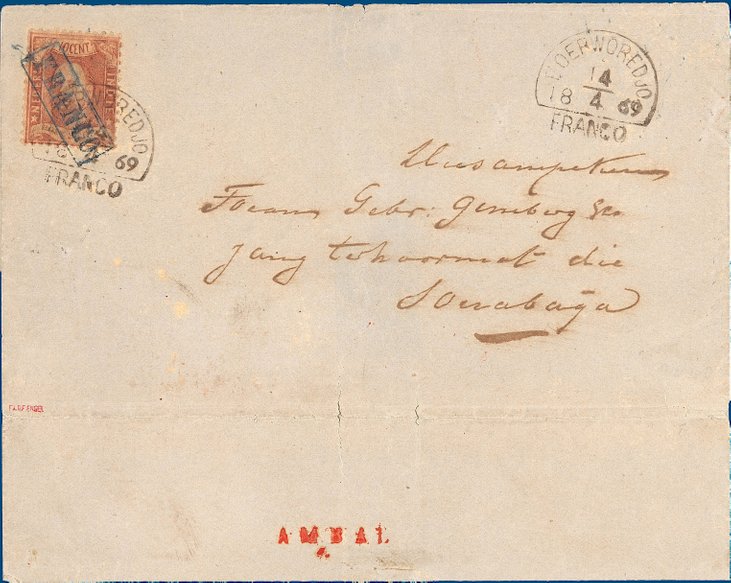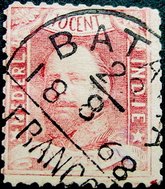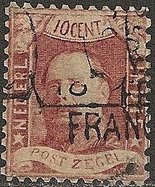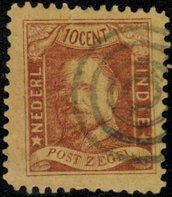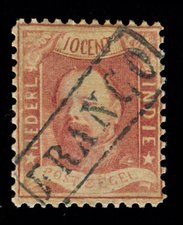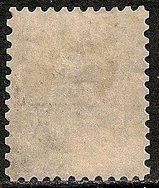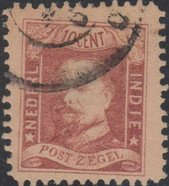10 cents 1868
1868 saw the first perforated stamp of the netherlands Indies: the stamp was that of the 1864 issue with comb perforation 12.5 x 12. The 1868 issue is rarer than that of 1864, with approximately 1 million stamps printed. It is also a rather challenging stamp to collect, being difficult to find in good condition with fine centering and perforation.
It is unknown (to me at least) when the 1868 stamp was released for sale. These are early usages of the stamp from Batavia 9/9 and 24/10 1868 and Muntok 21/9 1868
10c 1868 on letter from Kedirie to Surabaya. Stamp cancelled by Kedirie half-round franco cancel in blue 11 Sep. 1869.
Half-round franco cancels on the 1868 issue
some of the rarer cancellations
Benkoelen Billiton Telok Betoeng Singkawang Sumedang
Batavia Buitenzorg Rembang Bandjermasin Cheribon
Soerakarta Salatiga Bandong Magelang Kedirie
Pekalongan Pontianak Tjilatjap Banjoemaas Madioen
Passoeroean Soerabaija Palembang Muntok Amboina
Timor Djokjokarta Bezoeki Samarang Salatiga
Padang
Ambarawa
Toeban
The framed FRANCO cancel is rare on the 1868 issue: it was replaced by the half-round franco cancels sometime around May 1866, but it continued to be used by a range of sub-post offices. It is sometimes possible to find the combination of franco cancel and half-round cancel on a stamp, where the franco cancel would have been used with a sub-post office and the half-round applied subsequently at a main post office.
boxed franco cancel (rare) Pattie + franco Soerabaija + franco Soerakarta + franco
Salatiga + franco Samarang + franco Passoeroean + franco
Kedirie + franco Toeban + franco
Round cancels (rondstempels) on the 10 cents 1868.
The round cancel on the 1868 issue is a most uncommon occurrence indeed. From 1874 this cancel was used to cancel stamps (particularly on printed matters), but before that year it was not intended to be used as an obliterator. Below are usages from Samarang, Buitenzorg, Muntok, and Batavia, most from 1870.
An item for the connoisseur! A Makassar round cancel in red, used July 9 1870. Makassar is the main city on the island of Sulawesi.
I know only of Makassar and Timor that occasionally used the round cancel in red.
A copy with part of the half-round cancel of Batavia and manuscript Chinese characters.
Part of handwritten franco in combination with the half-round cancel of Rembang 1869.
Letter from Ambal sub-post office, with line cancel struck in red on reverse. The stamp was cancelled by blue framed FRANCO and subsequently with the half-round franco datemark of Poerworedjo 14 April 1869.
Danger, it's fake!!
None of the abominations below merit a place in my collections. They were all sold on Ebay where eager but clueless buyers line up to spend a veritable king's ransom on obviously faked and manipulated stamps.
Two examples of the 1868 issue which is really the 1864 issue with forged perforations. The stamp on the left is too broad and the perforations (especially on top) are flat and with no sign of having been torn. The perforations on the stamp on the right are too even, such as is almost never seen on the 1868 issue. Other indications of forging are the half-round Batavia cancel of August 1868 which is unusually early (too early?) for this stamp and the franco-in-box cancel which is only seen very rarely (it is much more common in combination with the half-round datestamp).
I'm not sure if this is the 1864 with faked perfs or the 1868 issue completely re-perforated. It doesn't matter. Seriously, it doesn't. The perforations are much too regular and flat with no visible paper tear. Ugly!
A total fake! With a type of mute cancellation and another peculiar cancel never in use in the Netherlands East Indies. To be avoided like the plague (unless fakes happen to be your thing).
